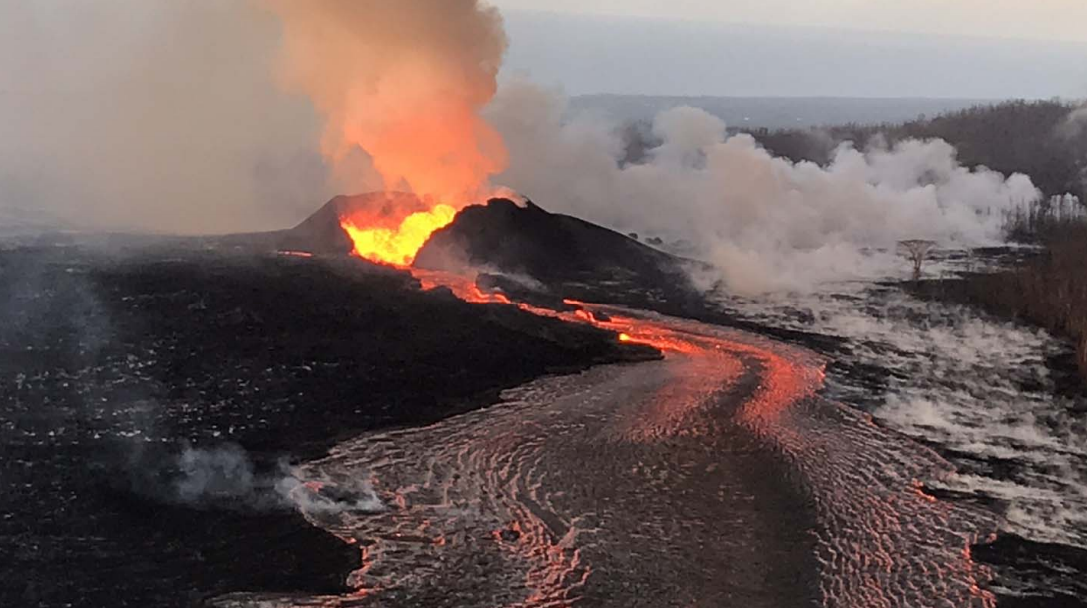The eruption of Hawaii’s Kīlauea volcano has displaced Big Island residents, sent molten rock hurtling into a sightseeing boat and spewed enough lava to create a whole new peninsula.

And it’s only just started, relative to the time it could go on for, said a U.S. Geological Survey (USGS) report released on Friday.
Coverage of the Kīlauea volcanic eruption on Globalnews.ca:
The event could last months, or even go on for a year or two if it maintains a high eruption rate, the report said.
The eruption can be traced back to April 30, when the Puʻu ʻŌʻō vent in the middle East Rift Zone of the Kīlauea volcano started collapsing.
From there, signs emerged that magma intruded into the volcano’s lower East Rift Zone under Leilani Estates, a subdivision on the east side of Hawaii’s Big Island.
Cracks subsequently started to form in the area before an eruption began on May 3, opening up fissures along the lower East Rift Zone.
The eruption accelerated on May 18, producing “more fluid lava” and flows that started to hit the ocean on May 20.
Volcanic activity would begin to concentrate at a point known as fissure 8; there, a “vigorous fountain” would erupt on May 27 and create a “relatively fast moving channelized flow that travelled northeast,” the report said.
READ MORE: Hawaii has a new peninsula thanks to Kileauea volcano
Lava from fissure 8 would first reach the ocean at Kapoho Bay on June 3 and lay itself out along the coast; it would destroy hundreds of homes.
Eventually, the eruption at fissure 8 produced what’s known as a “spatter cone,” or a landform that piles up with volcanic activity.
The spatter cone at fissure 8 reached as high as 55 metres by the end of June.
Lava from the spatter cone is being fed into a channel that carries it 13 kilometres to the ocean; it’s believed to be erupting lava at anywhere between 50 and 150 cubic metres per second.
The eruption has created a flow of lava into the ocean at Kapoho Bay, forming a lava delta that’s six kilometres wide and that extends up to 800 metres from the coastline that existed before the volcano started roaring.
That delta could collapse at any time — and if it does, it could trigger explosions that happen when hot rock touches seawater, the report said.
READ MORE: Lava explosion off Hawaii’s Big Island sends molten rock crashing through tour boat roof
The coast isn’t the only place where explosions can happen.
The USGS said hydrovolcanic explosions have been happening as far as 100 metres offshore — these events see lava and hot water shot up from the ocean as high as hundreds of metres, and they’re believed to happen several times in a day.
These may explain how molten rock crashed through the roof of a tour boat on Monday.
While it’s likely that the eruption could last as long as two years, it’s possible that the event could pause before additional volcanic activity commences later.
For now, the Puʻu ʻŌʻō vent is erupting at a high rate and it’s hard to see it stopping anytime soon.















Comments